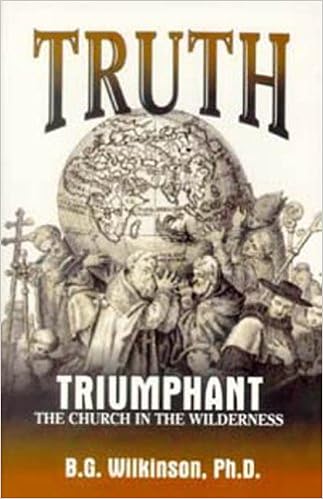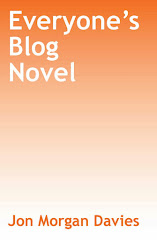One thing Tanner does a good job of in terms of setting up his account is denoting how multicultural China really is. We tend to think of the nation as a single people, but in fact, while the Han dominate the country, there are many other ethnic groups who have been integrated into the nation--and that over centuries: Monguls, Manchus, Tibetans, Urghars, Turks, and so on. Tanner does a good job of showing how many of these ethnic groups have dominated the nation at one time or another--and how they are different from one another.
In a sense, Chinese history until the twentieth century is fairly repetitive. It is a tale of the rise and fall of various monarchies, usually with periods of destablization and disunity between said monarchies. An epigraph about one-third of the way into the book sums up the first third of the work (and arguably sets up the pattern for the next third of the work):
"They say the momentum of history was ever thus: The empire, long divided, must unite; long united, must divide. Thus the House of Zhou reached its end and the empire as partitioned into save warring kingdoms. Thus these seven were absorbed into the House of Qui. Then Han and Cho destroyed Qin and waged war on each other until the empire was reunited under the House of Han, reinvigorated by Guangwudi and passed down the generations to Xiandi, the last of the Han, after whose generation the land was partitioned into three kingdoms."
After these would come the Sui, Tang, Song, Yuan, Ming, and Qing dynasties, with a similar pattern as noted. The Mongols would rule China under the Yuan dynasty, the Mings under the Ming dynasty, the Manchus under the Qing. Each conquering peoples would, in fact, often take on various Chinese customs in order to better fit in with the peoples and the former noble classes, including most especially Confucianism and to a lesser extent Taoism. The Mongols included a number of Nestorian Christians. Indeed, while religion was very much a background item in this book, I would be curious to know more about some of the religions that less associated with China in the present day, like Eastern Christianity and Islam, because they clearly had their adherents at one time in the land.
Things change quite a bit in the nineteenth and twentieth centuries. The weakness of the later Qing dynasty meant that the country was in large part ruled over by local warlords whose in-fighting left the door open for manipulation by colonial Western powers, who established areas of control over commerce and the subjugation, in many ways, of the Chinese nation. China moved during this stage toward the establishment of a republic, but the inability of political leaders to bring the nation into true unity and to throw off Western powers left open the door for a growing Communist movement (which itself had been part of the movement toward the Republic). Consigned to the rural areas, Mao Zedong and others built a loyal following that eventually established political dominance and the eventual of exile of the republic to the island of Taiwan. Most of the political moves during this time were to a large extent motivated by a desire to reestablish Chinese hegemony over its own territory, and the Communist movement essentially succeeded.
After pushing landlords out of much of their property, the Communists forged various programs to encourage economic growth of the country. Communal farms were given quotas of various sorts and people rewarded for them. Excess production was allowed to be sold on the market by individuals, which led to further growth. But there were also various problems that centralization created. Rosy but inaccurate reports from locals regarding production eventually led famine.
The Communist Party largely dissuaded people from dissenting with the powers that be, except again for brief periods when moderate criticism and openness was encouraged. Those who participated in such, however, usually rued the day for expressing such opinions, for when the dissent grew too intense, the Communist Party would change tactics, closing off free expression and cracking down on those who had previously expressed dissatisfaction (even though they were doing so with government approval and support, as a means to improve the system). A particular intense period of such crackdown was the Cultural Revolution, wherein various young peoples forged the Red Guard who in turn accused many of turning on the State. Like our own "Red Scare" of the 1960s, but with consequences that were even more deadly, the crackdown got out of hand, as people began to turn one another in so as to avoid being turned in themselves even as no one had in fact engaged in nefarious activity or thought.
Economic liberalization, which had kept moderately under wraps under Mao Zedong, took on a fiercer pace after his passing. China encouraged foreign investment and reaped the rewards with larger, more modern cities (Shanghai went from having one building over twenty stories tall to having over one hundred in a span of something like twenty years)--but also with growing economic disparity.
I read this book in part as a precursor to a Chinese reading list I am finally starting on. The sections on culture, in that sense, will be very useful. Writers and works I will want to consider for the list (if I can find them) are as follows:
Dao De Jing
Sun Tzu, Art of War [already read]
Confucious, Analects
Daniel K. Gardner, The Four Books (Analects, Mencius, Doctrine of the Mean, and Great Learning)
Wu-chi Liu and Iring Yucheng Lo, Sunflower Splendor: Three Thousand Years of Chinese Poetry
Victor H. Mair, The Columbia History of Chinese Literature
Mengzi (Menchius), Mengzi
John Minford and Joseph D. S. Lau, Classical Chinese Literature
Wai-lim Yip, Chinese Poetry
Book of Songs/Classics of Poetry
Li Bo (poet)
Tu Fu (poet)
Shi Nalan, Water Margin
Luo Guanzhong, Romance of the Three Kingdoms
Wu Cheng'en, Journey to the West
Cao Xueqin, Dream of the Red Chamber
Xiaoxiao Sheng, Jin Ping Mei
Bai Hua, Bitter Love
Wang Shuo (contemporary novelist)
On Chinese literary history, I might try Herbert Giles's 1901 History of Chinese Literature.







